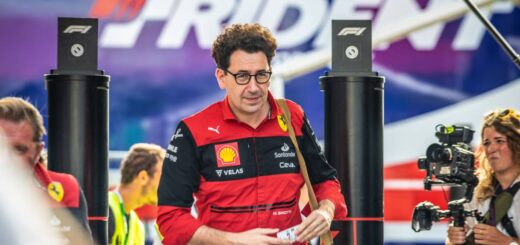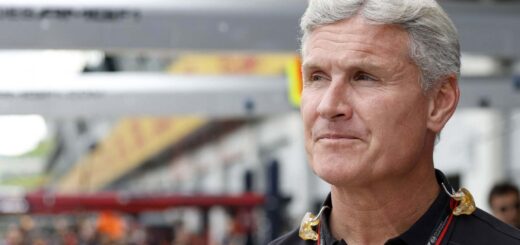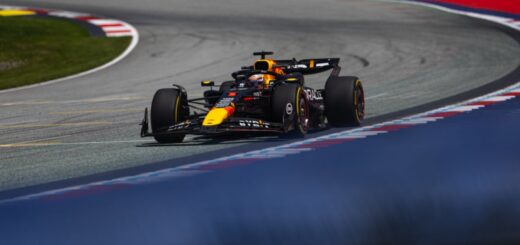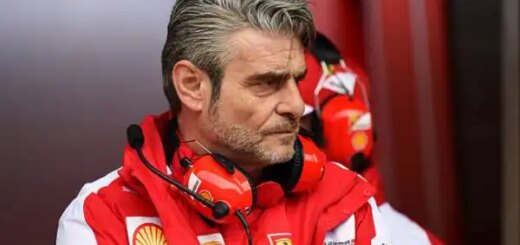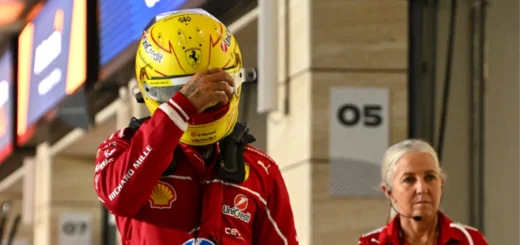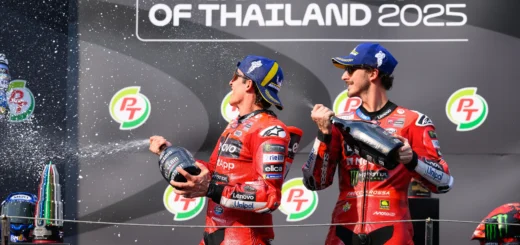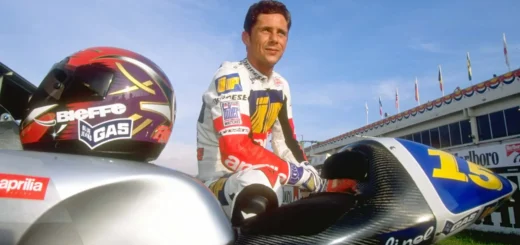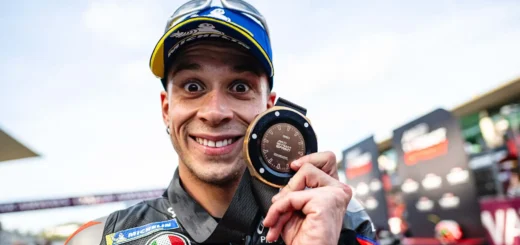How sprint qualifying works in Formula 1: complete guide

With the start of the 2025 Formula 1 World Championship, the sprint qualification, a format that continues to evolve since its debut in 2021, also returns. After four seasons of development and refinement, the’current system has redefined the technical and strategic balances among the teams. In this comprehensive guide, we take a detailed look at how sprint qualifying works in Formula 1, from parc fermé management to Sprint Qualifying, from the scoring system to tire strategies.
From experiment to pillar of modern F1
The’introduction of Sprint in 2021 marked a turning point in Formula 1 history. What began as an experiment with only three rounds and a limited scoring system (3-2-1 points for the top three) has evolved into a fundamental element of the championship.
2022 saw the’expansion of the points system up to the eighth position, while 2023 brought the real revolution: the F1 Sprint Race became a fully autonomous event, with its own dedicated qualifying session, initially called the Sprint Shootout, now called the Sprint Qualifying.
The 2024 consolidated this format, refining the structure of the weekend to maximize both competition and spectacle, innovations that are also characterizing the 2025 season, now entering its prime.
Sprint Qualifying: the new qualifying format
The Sprint Qualifying represents one of the most interesting innovations in the modern Formula 1 scene. This format maintains a similar structure to traditional qualifying, but introduces distinctive elements that make it unique and particularly challenging for teams and drivers:
- The first session, called SQ1, gives drivers 12 minutes to record their time
- The second phase, SQ2, further reduces the available time to 10 minutes
- The final and decisive phase, SQ3, represents the most intense time with only 8 minutes available
This time compression not only makes the format more exciting for spectators, but also requires a completely different approach by teams in managing the session.
The key to success in the sprint format
The sprint format requires specific skills and a strategic mindset. Tire management is crucial: tires must reach the ideal temperature at the right time, with only one attempt for the perfect lap. The ability to adapt quickly and make decisions under pressure can make the difference between success and failure.
This ability to calculate risks and benefits is very reminiscent of strategic and gambling games. In a way, sprint qualifying is like a high-stakes poker game: every choice is decisive, timing is critical, and sometimes it takes bluffing about actual performance margins.
So it is not surprising that many Formula 1 drivers, accustomed to constant risk assessment, are also skilled players. Declared enthusiasts include Daniel Ricciardo, Max Verstappen, and Fernando Alonso, who is known for his passion for roulette and poker.
Lewis Hamilton, seven-time world champion, is known to frequent the Monte Carlo casino, but he also admitted that he prefers online casinos, which offer him more discretion and the possibility of comparing different platforms through comparison sites. In this regard, in the Italian scene stands out BestCasinoOnline, which, thanks to the MCO Score, reviews aams online casinos in a reliable and unbiased way.
How sprint qualifying works in formula 1: the full weekend format
On the weekends when the F1 sprint race is held, the structure of the entire event undergoes significant changes:
- Friday:
- Free practice (90 minutes instead of the usual 60)
- Sprint Qualifying (determines the grid for the Sprint Race)
- Saturday:
-
- Sprint Race (100 km, about 30 minutes race time)
- Traditional Qualifying (for Sunday’s race)
- Sunday:
-
- Traditional Grand Prix
This new organization gives fans more action on the track and teams more opportunities to win championship points.
The differences with traditional qualifying: what changes in the sprint weekend
Thetraditional Formula 1 qualifying and Sprint Qualifying have substantial differences that go beyond just the length of the sessions. In the classic format, teams have three free practice sessions to optimize the car’s set-up before qualifying.
In the sprint weekend, however, the time to find the ideal setup is drastically reduced, with only one free practice session (albeit extended to 90 minutes) before Sprint Qualifying. This time compression requires a completely different approach to car preparation.
Here are the main differences between the two formats:
|
Session type |
Traditional Qualifications |
Sprint Shootout |
|
Session timings |
Q1 (18 minutes) Q2 (15 minutes) Q3 (12 minutes) |
SQ1 (12 minutes) SQ2 (10 minutes) SQ3 (8 minutes) |
|
Tire management |
Free choice of compounds |
Mixed compounds for each session |
|
Free trials available |
Three full sessions |
One test session |
Tire management in Sprint Qualifying: technical regulations
Tire management in Sprint Qualifying represents one of the most critical and strategically complex aspects of the race weekend. Unlike traditional qualifying, the technical regulations impose specific restrictions on the’use of compounds:
- SQ1 and SQ2: mandatory use of new medium tires
- SQ3: exclusive use of new soft tires
Teams must carefully plan the use of tires not only for sprint qualifying, but also in anticipation of the sprint race and Sunday’s Grand Prix.
Sprint Race F1: 100 km of pure adrenaline
The Sprint Race F1 is run over the distance of 100 km, about one-third the length of a traditional Grand Prix, with a duration of about 30 minutes. Unlike the main race, there are no pit-stop requirements, and the choice of tires is free, making strategy much more straightforward and focused on immediate performance.
The tires remain a crucial factor, however: teams must balance the demands of the Sprint Race with the need to store fresh sets for Saturday’s qualifying and Sunday’s Grand Prix.
How are points awarded in the Sprint Race?
The Sprint Race scoring system is designed to ensure the right balance between risk and reward. Points are awarded to the top eight finishers, creating significant opportunities for mid-table teams to accumulate important championship points.
The distribution of points follows this pattern:
|
Position |
Points |
|
First place |
8 points |
|
Second place |
7 points |
|
Third place |
6 points |
|
Fourth place |
5 points |
|
Fifth place |
4 points |
|
Sixth place |
3 points |
|
Seventh place |
2 points |
|
Eighth place |
1 point |
Unlike traditional races, in the Sprint Race no additional points are awarded for the fastest lap, further simplifying the teams’strategic approach.
New features on the parc ferme
One of the most significant changes introduced in 2024 concerns the parc fermé regime, the interval during which teams cannot change the configuration of the cars. In previous seasons, the parc fermé came into effect as early as Friday qualifying and remained in effect until the Sunday race, creating significant difficulties for teams.
With the new regulations, the parc fermé is enforced in two separate stages:
- From’the beginning of the Sprint Qualifying to the end of the Sprint Race
- From the’beginning of traditional qualifying to the end of the Grand Prix
This change allows teams to better adapt the cars for the different requirements of traditional qualifying and the main race, potentially improving the spectacle on the track.
Sprint Race 2025: where and when they will be held
For the 2025 season, six weekends with sprint qualification in F1 have been confirmed. The selected dates are:
- China Grand Prix (Shanghai)
- Miami Grand Prix
- Belgian Grand Prix (Spa-Francorchamps)
- United States Grand Prix (Austin)
- Brazilian Grand Prix (Interlagos)
- Qatar Grand Prix (Lusail)
This selection offers a balanced mix of traditional and modern circuits with different characteristics that will test teams and drivers in various competitive scenarios.
The future of the sprint format: prospects and changes
The sprint format in Formula 1 continues to evolve, with possible significant changes on the’horizon for the coming seasons. Ongoing discussions between the FIA, Formula 1 and teams focus mainly on the scoring system and weekend structure.
The goal remains to increase the spectacle while maintaining the sporting integrity of the competition. The proposed changes arise from the’detailed analysis of data collected in previous seasons and feedback from teams, drivers and fans.
A difference to MotoGP, which has extended the sprint format to all race weekends, Formula 1 maintains a more selective approach, limiting Sprint Races to six rounds per season, accounting for 25 percent of the calendar.
FAQ on sprint qualifying in Formula 1
How many points does the Sprint race award?
The Sprint Race awards points to the first eight finishers, with a maximum of 8 points for the winner, 7 for second, 6 for third, and so on down to 1 point for eighth. In 2025, there is no additional point for the fastest lap in Sprint Races.
How does qualifying work in Formula 1 during a sprint weekend?
In a sprint weekend, there are two separate qualifying sessions: Sprint Qualifying on Friday, which determines the starting grid for the Sprint Race, and traditional qualifying on Saturday afternoon, which defines the grid for Sunday’s Grand Prix.
What are the main differences between Sprint Race and traditional Grand Prix?”
The Sprint Race is a much shorter and more intense race, running about 100 kilometers (one-third the distance of a traditional Grand Prix) and lasting about 30 minutes. It has no mandatory pit stops and focuses on immediate action rather than long-term resource management.
How do you structure a weekend with Sprint format?
The weekend consists of: extended free practice (90 minutes) and Sprint Qualifying on Friday; Sprint Race and traditional qualifying on Saturday; and Grand Prix on Sunday. This structure optimizes the on-track action by offering fans more sports content throughout the entire weekend.

